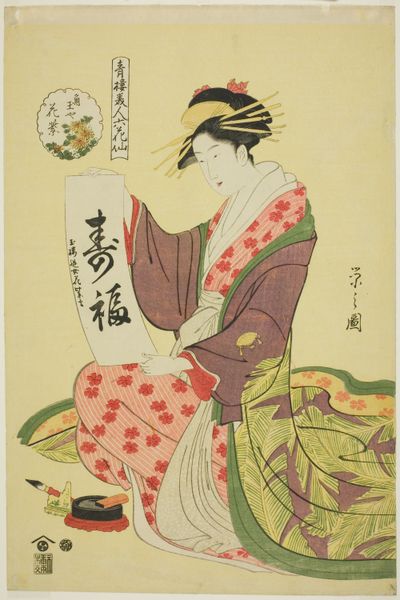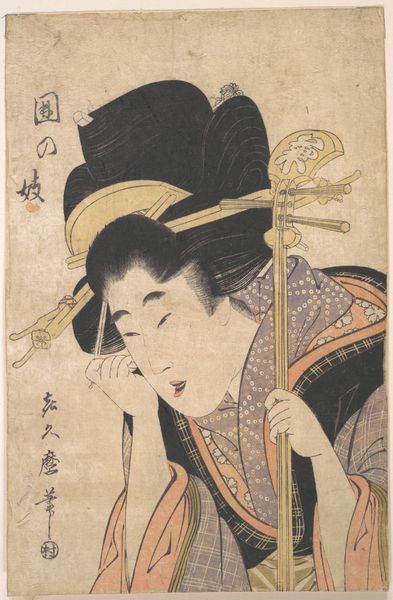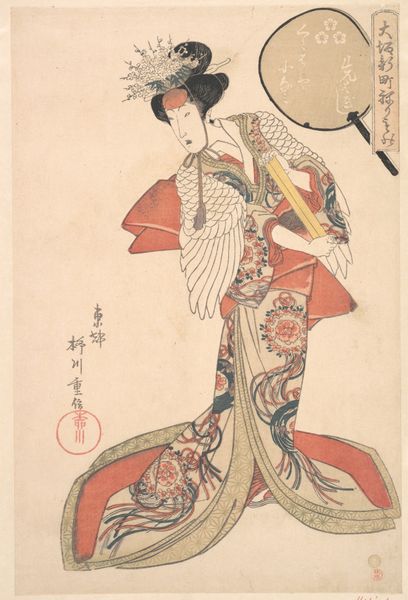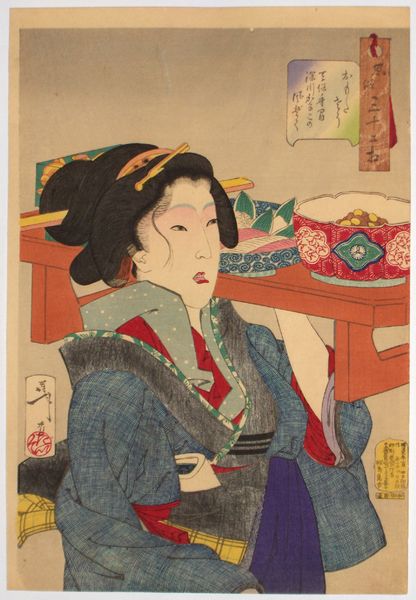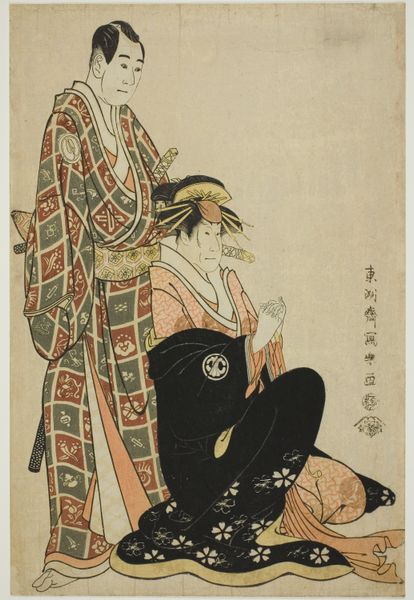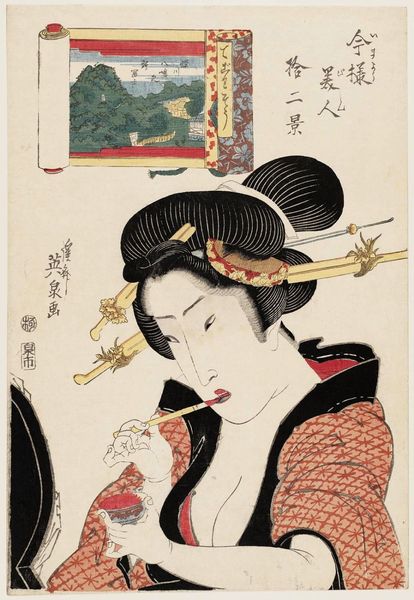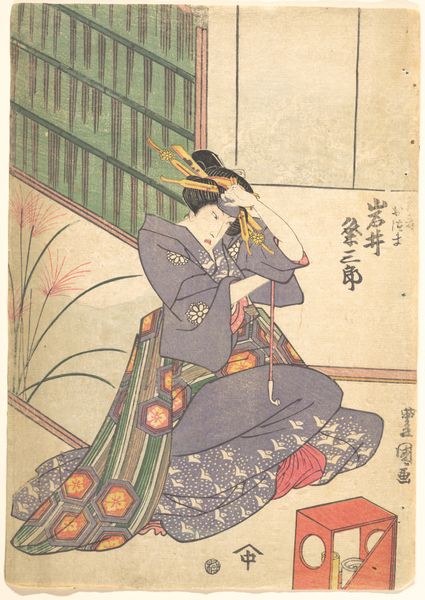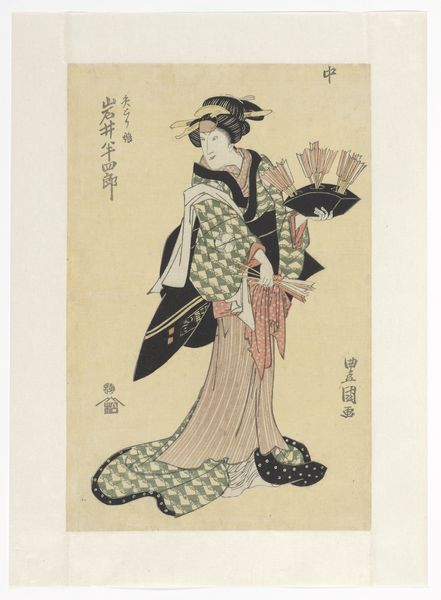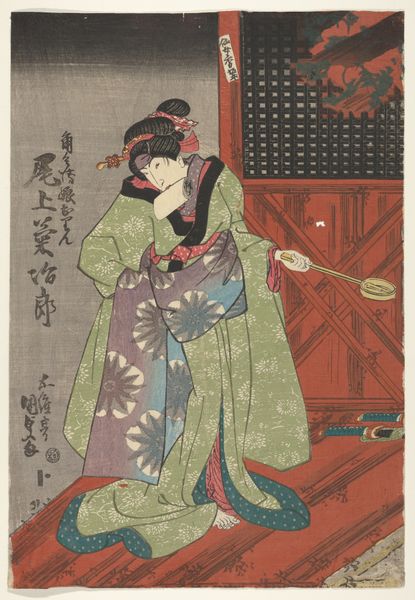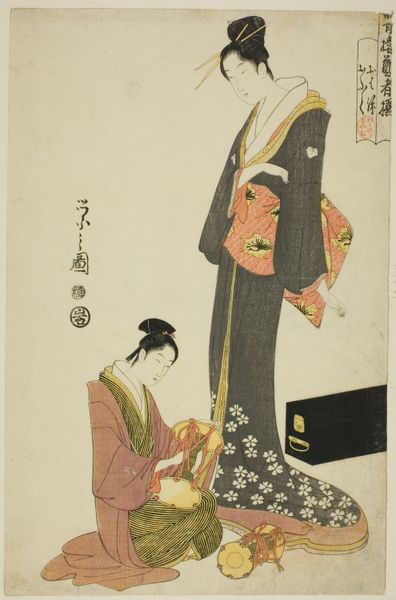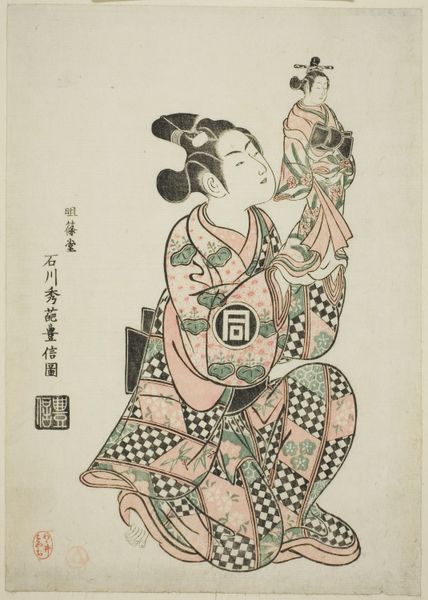
#
portrait
# print
#
asian-art
#
ukiyo-e
#
genre-painting
Dimensions: Vertical ōban; Image: 15 1/2 × 10 3/4 in. (39.4 × 27.3 cm)
Copyright: Public Domain
Editor: So, this woodblock print is "An Actor's Image in a Sake Cup," made by Utagawa Toyoshige sometime between 1815 and 1835. I'm struck by the contrast between the soft, almost dreamy quality of the woman and the intense, theatrical face in the cup. What’s your interpretation of the piece? Curator: As a materialist, I see a layering of societal constructs embedded in the physical production of this ukiyo-e print. Let’s consider the process: the woodblock carving itself, the pigments used, the paper. These are not neutral materials. Their sourcing, preparation, and deployment reflect the social structures and economic realities of Edo-period Japan. The depiction of the woman and the actor's face points to how gender and class intersect with the labor of both the artist and those represented. How might this mass-produced artwork reflect the values of consumption in Japanese society at the time? Editor: That's a perspective I hadn’t considered! Thinking about it that way, the print becomes less about individual expression and more about the social context. The availability of these prints says something about a rising middle class, doesn’t it, and their access to both luxury items such as fine paper and dyes, as well as leisure and entertainment represented in this print? Curator: Exactly. The commercial aspect cannot be divorced from its artistic merit, because without it, such things would not exist! Ukiyo-e prints like this catered to specific tastes. This speaks to the system of patronage and commodity exchange integral to the artistic practice of the time, highlighting the cultural production itself as the key. The material conditions determine its nature. Editor: I see how analyzing the material process sheds light on the artwork's place in society. So, from the materials to the mass production, it tells a complex story of culture and consumption. Curator: Precisely, and how they can define the artist and artwork’s presence in the period. We understand the message, through deconstructing its construction.
Comments
No comments
Be the first to comment and join the conversation on the ultimate creative platform.
